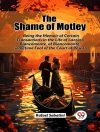In ‘A Touch of Sun, and Other Stories, ‘ Mary Hallock Foote artfully weaves a tapestry of human experience set against the backdrop of the American West during the late 19th century. This collection showcases her unique blend of realism and naturalism, reflecting the complexities of frontier life while embracing vivid descriptions that evoke the landscape’s beauty and harshness. Foote’s narratives often feature strong, multifaceted characters who grapple with personal and societal challenges, illuminating the interplay between individual desires and the encroaching influence of modernity. Each story invites readers to ponder themes of identity, resilience, and the elusive pursuit of happiness. Mary Hallock Foote, a prominent author and illustrator, was raised in a mining community in California, which profoundly shaped her literary voice. Her deep connection to the West is evident in her work, as she often drew upon her experiences and observations of pioneer life. An advocate for women’s rights and a keen observer of societal shifts, Foote’s insights into the female experience in a male-dominated era offer a thoughtful critique of the period’s gender dynamics and cultural norms. Readers seeking an authentic glimpse into the American frontier and the emotional depths of its inhabitants will find ‘A Touch of Sun, and Other Stories’ an enriching and evocative read. Foote’s mastery of language and her keen insights into human nature not only illuminate the time’s cultural landscape but also resonate with contemporary themes, making this collection a timeless exploration of the human spirit.
About the author
Mary Hallock Foote (1847-1938) was a pre-eminent figure in American literature at the turn of the 20th century, known for her vivid portrayal of life in the Western United States. Born in Milton, New York, Foote was educated at the Cooper Union School of Design for Women, which provided her with the artistic skills that would later enhance her written work. Her career as a storyteller began when she moved out West after marrying Arthur De Wint Foote, a mining engineer. Her first-hand experience in the rugged landscapes and burgeoning mining communities infused her work with authenticity and a deep sense of place. Foote’s narratives often reflected her personal struggles with the isolation and hardships of frontier life, but they also celebrated the beauty and resilience found therein. Notably, in her collection ‘A Touch of Sun, and Other Stories’ (1903), Foote combines her delicate sketches and insightful prose to capture the subtle nuances of Western life. Her literary style is marked by a naturalism and precision that have earned her a distinguished place in the canon of American regionalist writers. While not as widely recognized in later years, Mary Hallock Foote’s contributions to literature and art continue to be celebrated for their historical significance and profound understanding of the human spirit in the context of the American West.












